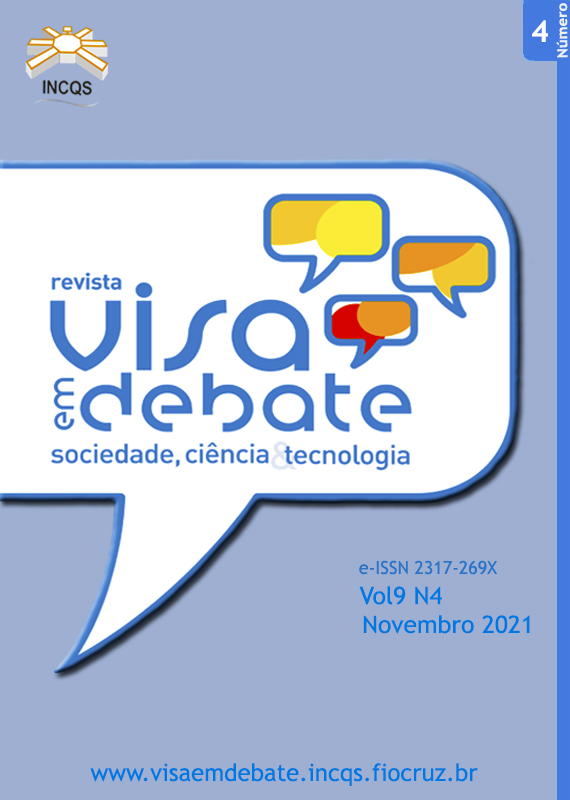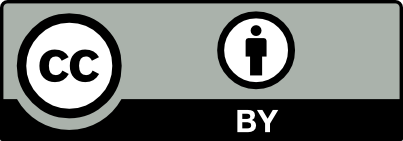Quality of water for human consumption in Brazil: Integrative literature review
DOI:
https://doi.org/10.22239/2317-269X.01822Keywords:
Water Supply; Water Quality; Public Health SurveillanceAbstract
Introduction: Access to water in sufcient quantity and quality, compatible with the potability standard established in the legislation, is a fundamental human right. The lack of universal access, as well as basic sanitation, generates social and economic impacts. Objective: To identify in the scientifc literature what has been shown about the quality
of water intended for human consumption, distributed collectively in Brazil. Method: Integrative literature review carried out with 28 studies selected from the Virtual Health Library (VHL) and Portal of Journals of the Coordination for the Improvement of
Higher Education Personnel (CAPES) from August to September 2019. Results presented descriptively and in the form of tables and fgures. Results: Two categories were obtained: 1. Environmental factors that interfere in the water quality – nonconformities
as to what was recommended were related to anthropic actions in the environment; 2. Water quality regarding to potability standard and surveillance – there were similarities between microbiological parameters, fluoridation, turbidity. Conclusions: Few studies have been found on surveillance of the water quality intended for human consumption, especially with an approach to action in Brazilian states and municipalities and these reflect difculties in complying with some parameters recommended by the legislation regarding water quality.
Downloads
References
UN. General comment No. 15: The right to water. 2003;18.
Junior ACG. Desafios para a universalização dos serviços de água e esgoto no Brasil. Rev Panam Salud Publica. junho de 2009;25:548–56.
Augusto LG da S, Gurgel IGD, Câmara Neto HF, Melo CH de, Costa AM. O contexto global e nacional frente aos desafios do acesso adequado à água para consumo humano. Ciência & Saúde Coletiva. junho de 2012;17(6):1511–22.
Zorzi L, Turatti L, Mazzarino JM. O direito humano de acesso à água potável: uma análise continental baseada nos Fóruns Mundiais da Água. Revista Ambiente & Água. dezembro de 2016;11(4):954–71.
Oliveira CM de. Sustainable access to safe drinking water: fundamental human right in the international and national scene. Revista Ambiente & Água. dezembro de 2017;12(6):985–1000.
UNICEF UNCF, WHO WHO. Progress on household drinking water, sanitation and hygiene 2000-2017: special focus on inequalities [Internet]. New York; 2017 [citado 20 de setembro de 2019]. Disponível em: https://www.who.int/water_sanitation_health/publications/jmp-report-2019/en/
ONU O das NU. Transformando Nosso Mundo: A Agenda 2030 para o Desenvolvimento Sustentável [Internet]. 2015 [citado 29 de setembro de 2019]. Disponível em: https://nacoesunidas.org/pos2015/agenda2030/
ANA AN de Á e SB. ODS 6 no Brasil: Visão da ANA sobre os indicadores [Internet]. [citado 3 de novembro de 2020]. Disponível em: https://www.ana.gov.br/acesso-a-informacao/institucional/publicacoes/ods6
IBGE IB de G e. Pesquisa Nacional por Amostra de Domicílios Contínua. Variável – Características gerais dos domicílios e dos moradores. 2017.
BRASIL. Portaria de Consolidação no 5, de 28 de setembro de 2017. 2017.
SISAGUA. Sistema de Vigilância da Qualidade da Água para Consumo Humano [Internet]. [citado 3 de novembro de 2020]. Disponível em: http://sisagua.saude.gov.br/sisagua/paginaExterna.jsf
WHO. Guidelines for drinking-water quality. 2017.
Brasil, Instituto Trata Brasil, Fundação Getúlio Vargas, Instituto Brasileiro de Economia. Benefícios econômicos da expansão do saneamento brasileiro [Internet]. 2010. Disponível em: www.tratabrasil.org.br/datafiles/uploads/estudos/pesquisa7/pesquisa7.pdf
Freitas FG de, Magnabosco AL. Benefícios econômicos da expansão do saneamento. Relatório de pesquisa produzido para o Instituto Trata Brasil e o Conselho Empresarial Brasileiro para o Desenvolvimento Sustentável. São Paulo; 2014.
Soares CB, Hoga LAK, Peduzzi M, Sangaleti C, Yonekura T, Silva DRAD, et al. Revisão integrativa: conceitos e métodos utilizados na enfermagem. Revista da Escola de Enfermagem da USP. abril de 2014;48(2):335–45.
Fujibayashi SY, Archetti FB, Pizzatto S, Losso EM, Pizzatto E. Severidade de fluorose dental em um grupo de escolares. RSBO (Online). junho de 2011;8(2):168–73.
Botelho LLR, Cunha CC de A, Macedo M. O MÉTODO DA REVISÃO INTEGRATIVA NOS ESTUDOS ORGANIZACIONAIS. Gestão e Sociedade. 2 de dezembro de 2011;5(11):121–36.
Mendes KDS, Silveira RC de CP, Galvão CM. Revisão integrativa: método de pesquisa para a incorporação de evidências na saúde e na enfermagem. Texto & Contexto - Enfermagem. dezembro de 2008;17(4):758–64.
BRASIL M da S. Portaria 518 de 25/03/2004 [Internet]. 2004. Disponível em: https://www.agencia.baciaspcj.org.br/docs/portarias/portaria-ms-518-04.pdf
Santos SCC dos, Silva NM dda a, Gorayeb A, Pereira LCC. CONDIÇÕES AMBIENTAIS DA FONTE HÍDRICA DO MUNICÍPIO DE BRAGANÇA - AMAZÔNIA ORIENTAL - BRASIL. Caminhos de Geografia [Internet]. 2010 [citado 8 de agosto de 2020];11(36). Disponível em: http://www.seer.ufu.br/index.php/caminhosdegeografia/article/view/16072
Lima VHM de. CIANOBACTÉRIAS EM RESERVATÓRIOS DO ESTADO DE PERNAMBUCO: OCORRÊNCIA E TOXICIDADE. HOLOS. 19 de setembro de 2017;4(0):111–24.
Grott SC, Hartmann B, Filho HH da S, Franco RMB, Goulart JAG. Detecção de cistos de Giardia spp. e oocistos de Cryptosporidium spp. na água bruta das estações de tratamento no município de Blumenau, SC, Brasil. Revista Ambiente & Água. setembro de 2016;11(3):689–701.
Ferreira MJM, Viana Júnior MM, Pontes AGV, Rigotto RM, Gadelha D. Gestão e uso dos recursos hídricos e a expansão do agronegócio: água para quê e para quem? Ciência & Saúde Coletiva. março de 2016;21(3):743–52.
Krolow IRC, Krolow D da RV, Santos DR dos, Casali CA, Mulazzani RP, Zanella R. Qualidade da água de poços tubulares utilizada no abastecimento: escolas do campo na Região Central do Rio Grande do Sul. Revista Thema. 3 de outubro de 2018;15(4):1425–41.
Cunha MC. AVALIAÇÃO DA CONCENTRAÇÃO DE ÍONS NITRATO NOS POÇOS TUBULARES QUE ABASTECEM NOVA PARNAMIRIM. CONNEXIO - ISSN 2236-8760. 3 de dezembro de 2013;3(1):19–38.
Santos AG da S dos, Moraes LRS, Nascimento SSA de M. Qualidade da Água Subterrânea e Necrochorume no Entorno do Cemitério do Campo Santo em Salvador/BA. Revista Eletrônica de Gestão e Tecnologias Ambientais. 6 de agosto de 2015;3(1):39–60.
Coelho SC, Duarte AN, Amaral LS, Santos PM dos, Salles MJ, Santos JAA dos, et al. Monitoramento da água de poços como estratégia de avaliação sanitária em Comunidade Rural na Cidade de São Luís, MA, Brasil. Revista Ambiente & Água. fevereiro de 2017;12(1):156–67.
Löbler CA, Silva JLS da. Vulnerabilidade à contaminação das águas subterrâneas do município de Nova Palma, Rio Grande do Sul, Brasil. Revista Ambiente & Água. março de 2015;10(1):141–52.
Sousa RS de, Menezes LGC de, Felizzola JF, Figueiredo R de O, Sá TD de A, Guerra GAD. Água e saúde no município de Igarapé-Açu, Pará. Saúde e Sociedade. dezembro de 2016;25(4):1095–107.
Peixoto DF, Alencar KP, Peixoto RF, Sousa CFM de, Sampaio FC, Forte FDS. Heterocontrole da fluoretação da água de abastecimento público do município de Jaguaribara, Ceará, Brasil. RBPS. 30 de setembro de 2012;25(3):271–7.
Moimaz SAS, Saliba O, Chiba FY, Sumida DH, Garbin CAS, Saliba NA. Fluoride concentration in public water supply: 72 months of analysis. Brazilian Dental Journal. 2012;23(4):451–6.
Cavalcante RBL. Ocorrência de Escherichia coli em fontes de água e pontos de consumo em uma comunidade rural. Revista Ambiente & Água. setembro de 2014;9(3):550–8.
Lisboa GM, Rabelo T, Sales AJR, Monteiro EMS, Filho EA da S. Análise microbiana e do teor de flúor adicionado à água de abastecimento em um estado do Nordeste do Brasil. Rev Bras Promoc Saúde. 29 de junho de 2015;28(2):216–22.
Sanches SM, Muniz JM, Passos C, Vieira EM, Sanches SM, Muniz JM, et al. Chemical and microbiological analysis of public school water in Uberaba Municipality. Revista Ambiente & Água. setembro de 2015;10(3):530–41.
Medeiros AC, Lima M de O, Guimarães RM. Avaliação da qualidade da água de consumo por comunidades ribeirinhas em áreas de exposição a poluentes urbanos e industriais nos municípios de Abaetetuba e Barcarena no estado do Pará, Brasil. Ciência & Saúde Coletiva. março de 2016;21(3):695–708.
Silva LJ da, Lopes LG, Amaral LA, Silva LJ da, Lopes LG, Amaral LA. Qualidade da água de abastecimento público do município de Jaboticabal, SP. Engenharia Sanitaria e Ambiental. setembro de 2016;21(3):615–22.
Bezerra ADA, Nogueira ER, Araújo FGDM, Brandão MGA, Chaves BE, Pantoja LDM. ANÁLISE DA POTABILIDADE DE ÁGUA DE CHAFARIZES DE DOIS BAIRROS DO MUNICÍPIO DE FORTALEZA, CEARÁ. Acta Biomedica Brasiliensia. 1o de julho de 2017;8(1):24–34.
Fialho JM, Leite MA, Pião ACS, Dornfeld CB, Prado HFA. AVALIAÇÃO MICROBIOLÓGICA DA ÁGUA CONSUMIDA POR UMA POPULAÇÃO RURAL DE ILHA SOLTEIRA – SÃO PAULO / MICROBIOLOGICAL ASSESSMENT OF WATER CONSUMED BY A RURAL POPULATION OF ILHA SOLTEIRA – SÃO PAULO. Revista Brasileira de Engenharia de Biossistemas. 29 de setembro de 2017;11(3):273–86.
Scalize PS, Pinheiro RVN, Ruggeri Junior HC, Albuquerque A, Lobón GS, Arruda PN, et al. Heterocontrole da fluoretação da água de abastecimento público em cidades do estado de Goiás, Brasil. Ciência & Saúde Coletiva. novembro de 2018;23(11):3849–60.
Belotti L, Frazão P, Esposti CDD, Cury JA, Santos Neto ET dos, Pacheco KT dos S, et al. Quality of the water fluoridation and municipal-level indicators in a Brazilian metropolitan region. Revista Ambiente & Água [Internet]. 2018 [citado 8 de agosto de 2020];13(6). Disponível em: http://www.scielo.br/scielo.php?script=sci_abstract&pid=S1980-993X2018000600307&lng=en&nrm=iso&tlng=en
Palmeira ÁR de OA, Silva VATH da, Júnior FLD, Stancari RCA, Nascentes GAN, Anversa L. Physicochemical and microbiological quality of the public water supply in 38 cities from the midwest region of the State of São Paulo, Brazil. Water Environment Research. 2019;91(8):805–12.
BRASIL M da S. Portaria no635/Bsb, de 26 de dezembro de 1975 [Internet]. 1975. Disponível em: https://central3.to.gov.br/arquivo/349893/
Silva JV da, Machado FC de A, Ferreira MAF. As desigualdades sociais e a saúde bucal nas capitais brasileiras. Ciência & Saúde Coletiva. agosto de 2015;20(8):2539–48.
Oliveira AF de, Leite I da C, Valente JG. Global burden of diarrheal disease attributable to the water supply and sanitation system in the State of Minas Gerais, Brazil: 2005. Ciênc saúde coletiva. abril de 2015;20(4):1027–36.
Soares ACC, Carmo RF, Bevilacqua PD, Soares ACC, Carmo RF, Bevilacqua PD. Saberes sociais e a construção da preferência pela água de consumo humano. Ciência & Saúde Coletiva. outubro de 2017;22(10):3215–23.
Guerra LV, Silva BDD, Guerra LV, Silva BDD. VIGILÂNCIA DA QUALIDADE DA ÁGUA PARA CONSUMO NO ESTADO DO RIO DE JANEIRO. Ambiente & Sociedade [Internet]. 2018 [citado 8 de agosto de 2020];21. Disponível em: http://www.scielo.br/scielo.php?script=sci_abstract&pid=S1414-753X2018000100408&lng=en&nrm=iso&tlng=pt
BRASIL M da S. Diretriz Nacional do Plano de Amostragem da Vigilância da Qualidade da Água para Consumo Humano. 2016.
Downloads
Published
Issue
Section
License
Copyright (c) 2021 Health Surveillance under Debate: Society, Science & Technology (Vigilância Sanitária em Debate: Sociedade, Ciência & Tecnología) – “Visa em Debate”

This work is licensed under a Creative Commons Attribution-NonCommercial 4.0 International License.
COPYRIGHT ALLOWANCE The author (s) hereinafter designated as the ASSIGNOR hereby assign and transfer, free of charge, the ownership of the copyrights related to this ARTICLE to the Vigilância Sanitária em Debate: Sociedade, Ciência & Tecnologia (Health Surveillance under Debate: Society, Science & Technology) – Visa em Debate, represented by FUNDAÇÃO OSWALDO CRUZ, established at Av. Brasil, nº 4365, Manguinhos, Rio de Janeiro, RJ, Brazil, CEP 21045-900, under the conditions set out below: (a) The terms and conditions set forth in this Agreement shall apply to the following: 1. The ASSIGNOR declares that they s(he) is (are) the author (s) and owner (s) of the copyrighted property of the ARTICLE submitted. 2. The ASSIGNOR declares that the ARTICLE does not infringe the copyrights and / or other property rights of third parties, that the disclosure of images (if any) has been authorized and that they s(he) assume(s) full moral and / or property liability for its content, before third parties. 3. THE ASSIGNOR assigns and transfers all copyrights relating to the ARTICLE to the ASSIGNEE, especially the rights of editing, publication, translation into another language and reproduction by any process or technique. The ASSIGNEE becomes the exclusive owner of the rights related to the ARTICLE, and any reproduction, totally or partially, is prohibited in any other means of publicity, printed or electronic, without prior written authorization from the ASSIGNEE. 4. The assignment is free and, therefore, there will be no remuneration for the use of the ARTICLE by the ASSIGNEE.







